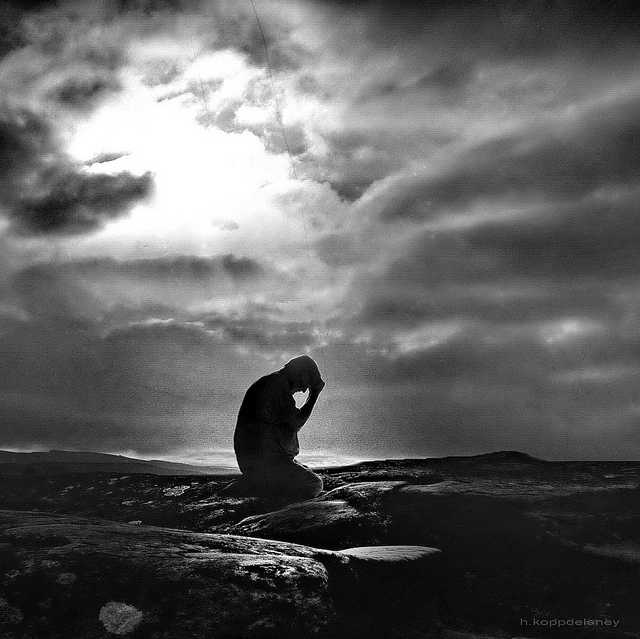I’ve never forgotten the feeling I had when I walked into my mother and father’s house that first time after she was gone.
“Dad, what did you do with all of mom’s stuff?”
I was stunned. The house was a mess and had a desolate, vacant feel to it.
He said he’d sold everything.
“You sold everything!”
“Why’d you do it, Dad? I said. “The house feels like somebody has died.”
“What do you think, daughter. Somebody did die. Your mother has Alzheimer’s Disease. You think she’s coming back from that nursing home?”
He said he couldn’t stand living there with all the reminders.
“But Dad. There might have been some things I wanted. I feel like you sold my stuff.”
“It wasn’t your stuff,” he said dully. “It was mine. I was the one married to her. Not you.”
Grief. Sometimes it can feel like a punch in the stomach.
Since those early days with my father however, I have learned a lot about grief and I can say that if it is any one thing, it is unique to the individual. Not everybody feels it to the same extent and not everybody expresses it in the same way.
In fact, quite the contrary.
Even members of the same family, such as my father and I, experience grief differently. Tragically, this difference can cause more pain and more damage than the actual loss of the person who died can cause.
The truth is that one way of grieving isn’t better than the other.
It’s just different.
For the survivors to survive and maintain loving relationships with each other, each must leave room for the other’s way of grieving,
No one gets to say his way is best.
There’s a lot in social media these days about “feeling your grief” and about “letting it all hang out” and about “demanding respect for your feelings.” Just look at the memes justifying grief, lots and lots of grief.
While I understand and appreciate that in our grief-suppressive culture, support is needed by those who are emotional about grief—not everybody is like that.
Some people feel or express their grief quietly, or deep within themselves;
Some people don’t talk about it, don’t share it and don’t need or want to;
Some people get angry and express that anger everywhere else rather than directly at the loss;
Some people move into normalizing their lives as quickly as possible;
Some people feel a range of emotions including denial and confusion about themselves and who they are in the new paradigm that doesn’t include the one who died;
Some people move into actively memorializing the person who has died with monuments, statues, even libraries and universities;
Some people use their grief to fuel activism;
Some people deny the reality of the loss until they are able to recognize it—or in some cases, some people never recognize it; and
Some people look outward to religion or philosophy as a way of providing a sense of belonging or meaning.
That day that I went to my father’s house and saw that he had sold my mother’s belongings, we later drove over to the nursing home together. He told me that he couldn’t stand having her stuff around. He said it reminded him that she was never coming home.
“Never coming home.”
I hadn’t actually had that concrete thought. I don’t think I had allowed it. While my father was busy normalizing his life, I was busy denying my mother’s imminent death.
Through all the tests and the social workers’ visits and the arrangements with Arizona Long Term Care, the reality that she was going into a nursing home for skilled care and never coming out hadn’t really hit me.
“But Dad,” I said. “She’s not dead.”
“Yes she is,” he said. “The woman I lived with, who lived with me in that house is dead.”
None of a person’s individual ways of grieving are “right” or “wrong.”
What is “wrong” is when one person doesn’t respect or acknowledge another person’s way of grieving—and doesn’t give the other person the time or the space to express it in their own way—especially in families.
My father told me that to honor his marriage to my mother, the very next day after she left, he began his daily ritual of going to her room every day at 7:00 in the morning to sit with her while she had breakfast, lunch and dinner. Then, as the years went by, he went there to feed her breakfast, lunch and dinner and ultimately he went there to put the straw in her mouth and encourage her—in Italian—to swallow the bland, creamy liquid that had become her breakfast, lunch and dinner.
“What the hell is ‘skilled care’ anyway?” he uttered bitterly. “Just a bunch of people getting a paycheck for what I did as her husband.”
He reminded me of something C.S. Lewis had said in his memoir, A Grief Observed.
“Bereavement is not the truncation of married love but one of its regular phases. …What we want is to live our marriage well and faithfully through that phase, too.”
When my mother finally died, I learned that in fact my father had kept certain things of my mother’s aside for me; things that he himself couldn’t bear to part with until then: her sewing machine, her oil paints, a small sewing box with her sewing sheers in it, and for some strange reason, most precious of all to me, was the ruler she had used to measure hems with. On the back of it, he had written her name in big bold letters.
Funny, how it worked out.
In the end, it meant more to me that he had made a pile of her things and given them to me than my having gone through my mother’s things would have meant. Him giving them to me, rather than me going through them and picking what I wanted, somehow doubled the love in them.
I keep my mother’s hemming ruler right here, right on top of my desk.
It reminds me of her—and of him.
You’d be amazed at how many things you need to measure with an old hemming ruler that has your mother’s name on written on the back of it.
Author: Carmelene Siani
Editor: Catherine Monkman
Image: Hartwig HKD/flickr







Read 0 comments and reply